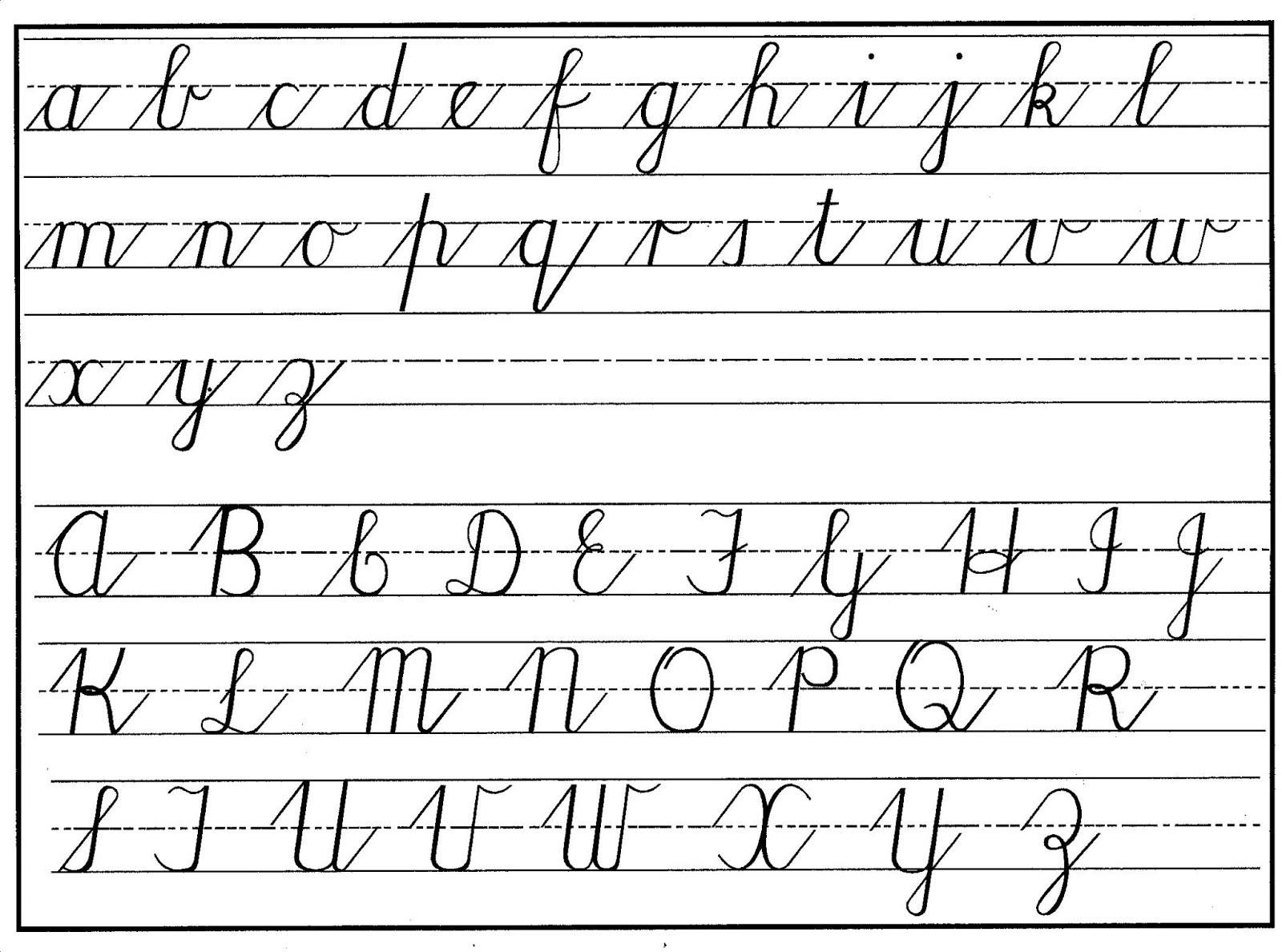Cursive writing cursive is a delightful and elegant form of penmanship that has captivated generations. As technology continues to dominate our daily lives, the charm of cursive writing seems to linger in the shadows, awaiting rediscovery. This unique style of writing is not just a means of communication but an art form that expresses personality, creativity, and individuality. From handwritten letters to beautiful invitations, cursive writing adds a touch of sophistication and warmth to our written words.
While many may view cursive writing as a lost skill, it is important to recognize its significance in fostering fine motor skills and enhancing cognitive development. Cursive writing encourages fluidity and rhythm, allowing thoughts to flow seamlessly onto paper. Moreover, it serves as a bridge to connect us with our past, reminding us of the importance of handwritten communication in a world increasingly dominated by digital interactions.
In this article, we'll explore the fascinating world of cursive writing cursive, delving into its history, techniques, benefits, and much more. Whether you are a beginner looking to learn this beautiful art form or someone seeking to refine your skills, this comprehensive guide will inspire you to embrace cursive writing as a meaningful and enjoyable practice.
What is Cursive Writing Cursive?
Cursive writing cursive refers to a style of writing in which the letters are connected, allowing for a more fluid and natural flow. Unlike print writing, where each letter stands alone, cursive allows the writer to create a continuous line, making it faster and more efficient for writing long passages. This style of writing is characterized by its loops, curves, and slants, which give each letter its unique personality.
Why is Cursive Writing Important?
Understanding the importance of cursive writing cursive goes beyond mere aesthetics. Here are a few reasons why it remains a valuable skill:
- Enhancing Cognitive Abilities: Writing in cursive engages different parts of the brain, improving overall cognitive function.
- Fine Motor Skills: The fluid movement required in cursive writing helps develop fine motor skills in children.
- Personal Expression: Cursive writing allows individuals to showcase their unique handwriting styles and personality.
- Connecting with History: Many historical documents are written in cursive, making it essential for understanding our past.
How to Start Practicing Cursive Writing Cursive?
Getting started with cursive writing requires patience and practice. Here are some steps to help you find your flow:
- Begin with the basics: Familiarize yourself with the cursive alphabet, focusing on both uppercase and lowercase letters.
- Practice individual letters: Write out each letter repeatedly until you feel comfortable with their shapes and connections.
- Connect letters: Start practicing simple words by connecting the letters, focusing on maintaining a consistent slant and spacing.
- Move on to phrases: Once you're comfortable with words, try writing short phrases or sentences to build your confidence.
- Experiment with style: As you become more proficient, explore different styles of cursive writing and find the one that resonates with you.
Who Invented Cursive Writing?
The origins of cursive writing can be traced back to ancient civilizations, where the need for efficient writing methods arose. The Romans were among the first to develop a cursive script known as "cursive Latin," which evolved over the centuries. This script was primarily used for everyday writing, while more formal scripts were reserved for inscriptions and official documents. Over time, cursive writing has adapted and transformed across different cultures, leading to the diverse styles we see today.
What are the Different Styles of Cursive Writing Cursive?
Cursive writing cursive comes in various styles, each with its unique flair. Some popular styles include:
- Modern Cursive: A contemporary take on cursive writing, characterized by its simplicity and elegance.
- Spencerian Script: Developed in the 19th century, this style is known for its graceful loops and swirls.
- Palmer Method: A simplified style that focuses on speed and legibility, often taught in schools.
- Italic Cursive: A slanted style that combines cursive with elements of italic writing, creating a unique visual appeal.
How Can Cursive Writing Benefit Students?
In an educational context, cursive writing offers numerous advantages for students:
- Improved Writing Skills: Students who practice cursive writing tend to develop better handwriting overall.
- Enhanced Focus: The rhythmic nature of cursive can help students concentrate better during writing tasks.
- Boosted Creativity: Cursive writing encourages personal expression, allowing students to explore their creativity.
Is Cursive Writing Still Taught in Schools?
With the rise of technology and digital communication, many schools have shifted their focus away from teaching cursive writing. However, there is a growing movement advocating for its reintroduction into the curriculum. Supporters argue that cursive writing is essential for developing fine motor skills and cognitive abilities, as well as for preserving the art of handwriting in an increasingly digital world. As parents and educators recognize the value of cursive writing, its presence in schools may see a resurgence.
What Resources are Available for Learning Cursive Writing Cursive?
For those eager to learn or improve their cursive writing skills, several resources are available:
- Workbooks: Many workbooks focus on cursive writing practice, providing guided exercises for learners of all ages.
- Online Tutorials: Numerous websites and YouTube channels offer video tutorials and lessons on cursive writing techniques.
- Mobile Apps: Various apps are designed to help users practice cursive writing through interactive exercises and games.
- Community Classes: Local community centers or adult education programs often offer cursive writing classes for those interested.
Conclusion: Embracing Cursive Writing Cursive
In conclusion, cursive writing cursive is more than just a nostalgic form of penmanship; it is a valuable skill that fosters creativity, enhances cognitive abilities, and connects us with our history. Whether you are a beginner or someone looking to refine your skills, embracing cursive writing can lead to a more fulfilling and expressive writing experience. So, grab your pen and paper, and let the beauty of cursive writing cursive flow through your fingertips!




